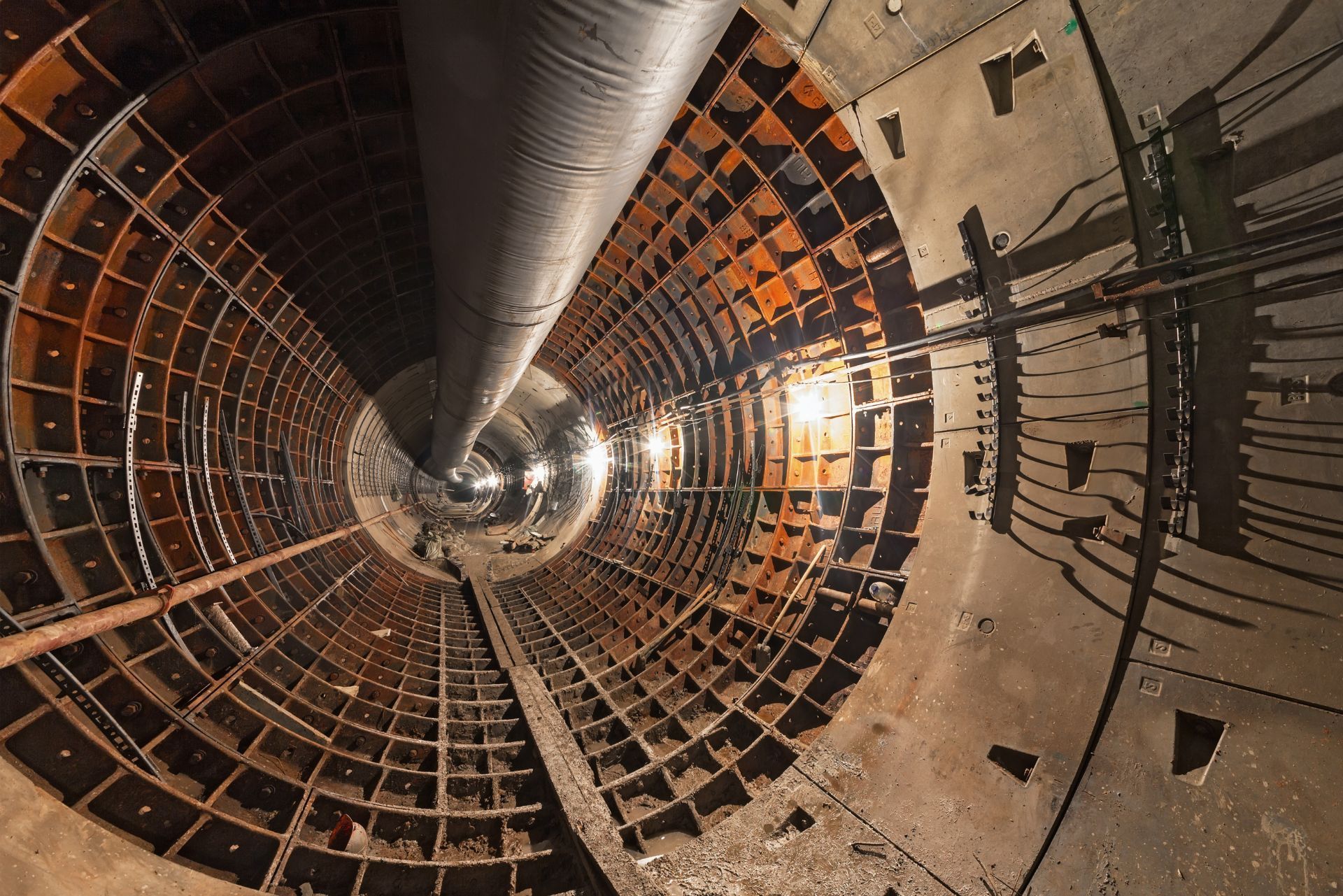Top 3 Recommended Policies

In the bustling metropolis of New York City, the infrastructure is both extensive and complex. Among the many systems that keep the city functioning smoothly, the underground sewer pipe network plays a crucial role. However, as with any infrastructure, issues can arise, leading to significant damage and costly repairs. This is where underground sewer pipe insurance comes into play. This article aims to provide a comprehensive overview of what you need to know about this essential type of insurance.
Understanding Underground Sewer Pipe Insurance
Underground sewer pipe insurance is a specialized form of coverage designed to protect property owners from the financial burden associated with sewer line repairs and replacements. Given the unique challenges posed by New York's aging infrastructure, understanding this insurance is vital for homeowners and landlords alike.
What Does Underground Sewer Pipe Insurance Cover?
Typically, this insurance covers the costs associated with repairing or replacing damaged sewer pipes. This includes issues caused by tree roots, ground shifting, or even accidental damage during construction. It is important to note that standard homeowners' insurance policies often do not cover these specific types of damages, making this specialized insurance a worthwhile consideration.
In addition to repair costs, some policies may also cover related expenses such as cleanup and restoration of the affected area. This can include landscaping, flooring, and other damages that may occur as a result of a sewer pipe failure. Furthermore, some policies may extend coverage to include the costs of hiring professionals for inspections and assessments, ensuring that any underlying issues are identified and addressed before they escalate into more significant problems.
Why is This Insurance Important in New York?
New York City is known for its dense population and aging infrastructure. Many of the sewer lines date back to the 19th century, making them susceptible to various issues. The combination of heavy traffic, weather conditions, and urban development can exacerbate the wear and tear on these pipes. As a result, homeowners may find themselves facing unexpected repair bills that can run into thousands of dollars.
Having underground sewer pipe insurance can provide peace of mind, knowing that financial protection is in place should a problem arise. It allows property owners to address issues promptly without the added stress of financial strain. Additionally, the potential for environmental impact from a sewer line failure cannot be overlooked. Untreated sewage leaks can lead to contamination of local waterways, posing
health risks to the community and leading to costly fines for property owners. By investing in this insurance, homeowners not only protect their property but also contribute to the overall well-being of their neighborhood.

Types of Coverage Available
When considering underground sewer pipe insurance, it is essential to understand the different types of coverage available. Policies can vary significantly in terms of what they cover and the conditions under which claims can be made. Understanding these nuances can help homeowners make informed decisions that best suit their needs and protect their investments.
Standard Coverage
Standard underground sewer pipe insurance typically covers the following:
- Repair or replacement of damaged sewer pipes
- Costs associated with excavation and restoration
- Damage to landscaping or hardscaping caused by repairs
This basic coverage is often sufficient for many homeowners, but it is crucial to read the policy details to understand any exclusions or limitations. For instance, some policies may not cover damage caused by tree roots or neglect, which can lead to costly repairs down the line. Homeowners should also be aware of the typical lifespan of their sewer systems and consider how age and wear might affect their coverage needs.
Extended Coverage Options
For those looking for more comprehensive protection, extended coverage options may be available. These can include:
- Coverage for additional types of damage, such as from natural disasters
- Higher limits on repair costs
- Coverage for preventive maintenance and inspections
Extended coverage can provide a safety net for property owners who want to ensure they are fully protected against a wide range of potential issues. Additionally, some policies may offer specialized endorsements that cover unique circumstances, such as damage from earthquakes or
flooding, which can be particularly beneficial in areas prone to such events. Homeowners should also consider the value of routine inspections included in extended plans, as these can help identify potential problems before they escalate into major repairs, ultimately saving time and money.
Factors Influencing Insurance Premiums
Like any insurance policy, the cost of underground sewer pipe insurance can vary based on several factors. Understanding these can help homeowners make informed decisions when selecting a policy.
Property Location
The location of the property plays a significant role in determining insurance premiums. Areas with older infrastructure or a higher incidence of sewer issues may result in higher premiums. Additionally, properties located near large trees or in regions prone to flooding may also see increased costs. Local government regulations and the availability of municipal sewer services can further influence premiums; for instance, homes in areas lacking proper sewage facilities may face additional risks, prompting insurers to raise rates to mitigate potential losses.
Moreover, the local climate can also impact sewer insurance costs. Regions with heavy rainfall or snowmelt may experience more frequent sewer backups, leading to higher premiums. Homeowners in such areas might consider investing in preventive measures, such as sump pumps or backflow valves, which could not only protect their property but potentially lower their insurance costs over time.
Property Age and Condition
The age and overall condition of the property can also affect insurance rates. Older homes may have outdated plumbing systems that are more prone to failure, leading to higher premiums. Conversely, newer constructions with modern plumbing may qualify for lower rates due to reduced risk. Insurers often assess the materials used in the plumbing system; for instance, homes with cast iron pipes may face higher premiums compared to those with PVC or other modern materials known for their durability and resistance to corrosion.
Furthermore, regular maintenance and inspections can significantly influence insurance premiums. Properties that demonstrate a history of proper upkeep, such as routine sewer line cleaning and prompt repairs, may be viewed more favorably by insurers. Homeowners who can provide documentation of such maintenance may find themselves eligible for discounts, as a well-maintained property is generally perceived as a lower risk for insurance companies.
How to Choose the Right Policy
Choosing the right underground sewer pipe insurance policy requires careful consideration of various factors. It is essential to assess individual needs and circumstances to find the best coverage.
Assess Your Risks
Before selecting a policy, homeowners should assess their specific risks. This includes evaluating the age of the sewer lines, the condition of the property, and any history of plumbing issues. Understanding these factors can help determine the level of coverage needed. Additionally, homeowners should consider environmental factors such as soil type and climate conditions, which can affect the integrity of underground pipes. For instance, properties located in areas prone to heavy rainfall or flooding may face higher risks of sewer line damage, necessitating more comprehensive coverage.
Compare Multiple Quotes
It is advisable to obtain quotes from multiple insurance providers to compare coverage options and premiums. Each insurer may offer different terms, so reviewing several policies can help identify the best fit. When comparing quotes, pay close attention to the specifics of what each policy covers, including exclusions and limitations. Some policies may offer additional benefits, such as coverage for excavation costs or damage to landscaping, which can significantly impact the overall value of the insurance. Furthermore, consider the reputation and customer service of the insurance providers, as a company that is responsive and supportive can make a significant difference when filing a claim.
Common Exclusions and Limitations
While underground sewer pipe insurance can provide valuable protection, it is crucial to be aware of common exclusions and limitations that may apply. Understanding these can help prevent unpleasant surprises when filing a claim.
Pre-existing Conditions
Most insurance policies will not cover damages resulting from pre-existing conditions. If a homeowner is aware of an issue before purchasing insurance, it is unlikely that the insurer will cover related repairs. Therefore, conducting a thorough inspection of the sewer system before obtaining coverage is advisable. This proactive approach not only helps identify potential problems but also allows homeowners to address them before they escalate, potentially saving significant repair costs in the long run. Additionally, some insurance providers may require documentation of the sewer system's condition at the time of policy initiation, further emphasizing the importance of a comprehensive inspection.
Negligence and Lack of Maintenance
Insurance policies typically require homeowners to maintain their sewer systems adequately. If damage occurs due to negligence or failure to perform regular maintenance, claims may be denied. Homeowners should keep records of maintenance and inspections to support any future claims. Regular maintenance can include routine inspections by a licensed plumber, cleaning out tree roots, and ensuring that the system is free from blockages. Furthermore, it is wise to stay informed about local regulations regarding sewer systems, as some municipalities may have specific requirements for maintenance and inspections that could impact insurance coverage. By staying diligent and proactive, homeowners can not only protect their property but also ensure that they are in compliance with their insurance policy's stipulations.

How to File a Claim
Filing a claim for underground sewer pipe damage can seem daunting, but understanding the process can simplify it significantly. Here is a step-by-step guide to help navigate the claims process.
Document the Damage
The first step in filing a claim is to document the damage thoroughly. This includes taking photographs, making notes of the extent of the damage, and gathering any relevant reports from plumbers or contractors. Detailed documentation will support the claim and help the insurer assess the situation accurately. It’s also beneficial to note the time and date when the damage occurred, as this information can be crucial in determining the cause and whether it falls under your policy coverage. Additionally, if there are any witnesses to the incident, collecting their statements can further bolster your case.
Contact Your Insurance Provider
Once the damage has been documented, the next step is to contact the insurance provider. Most companies have a dedicated claims department that can guide homeowners through the process. It is essential to provide all necessary information and documentation to facilitate a smooth claims experience. Be prepared to explain the situation clearly and concisely, as this will help the claims adjuster understand the context of the damage. If you have any questions about your policy coverage or the claims process, don’t hesitate to ask for clarification during this initial contact. Understanding the specifics of your coverage can prevent surprises later on.
Follow Up on Your Claim
After submitting your claim, it’s important to follow up regularly. Claims can sometimes take longer than expected due to various factors, such as the complexity of the damage or the volume of claims being processed. Keeping in touch with your claims adjuster can provide you with updates and help ensure that your claim is being handled efficiently. Additionally, if any further documentation is requested, responding promptly can help expedite the process and demonstrate your commitment to resolving the issue.
Preventive Measures to Avoid Sewer Pipe Issues
While insurance can provide financial protection, taking preventive measures can help avoid sewer pipe issues altogether. Here are some strategies to consider.
Regular Inspections
Conducting regular inspections of the sewer system can help identify potential issues before they escalate. Homeowners should consider hiring a professional plumber to perform routine checks, especially for older properties. During these inspections, plumbers can utilize advanced technology, such as video camera inspections, to thoroughly examine the interior of the pipes for cracks, blockages, or signs of wear. This proactive approach not only saves money in the long run but also provides peace of mind knowing that the sewer system is functioning optimally.
Proper Landscaping
Landscaping choices can significantly impact sewer pipes. Homeowners should avoid planting large trees near sewer lines, as their roots can infiltrate and damage the pipes. Additionally, ensuring proper drainage around the property can help prevent water accumulation that may lead to sewer line issues. Incorporating native plants that require less water can also be beneficial, as they reduce the need for excessive irrigation that might saturate the ground and put pressure on sewer lines. Furthermore, installing permeable paving or rain gardens can enhance drainage and minimize runoff, creating a healthier environment for both the landscape and the sewer system.
Mindful Waste Disposal
Another critical aspect of maintaining sewer health is mindful waste disposal. Homeowners should be educated about what can and cannot be flushed down the toilet or poured down the drain. Items such as grease, coffee grounds, and personal hygiene products can lead to significant blockages. Encouraging the use of compost bins for organic waste and providing clear guidelines for disposal can greatly reduce the risk of sewer line clogs. Additionally, using drain strainers can catch debris before it enters the plumbing system, further protecting the integrity of the pipes.
Conclusion
Underground sewer pipe insurance is a critical consideration for property owners in New York City. With the city's aging infrastructure and unique challenges, having the right coverage can provide peace of mind and financial protection. By understanding the types of coverage available, assessing risks, and taking preventive measures, homeowners can safeguard their properties against unexpected sewer issues.
Ultimately, investing in underground sewer pipe insurance is not just about protecting against potential damage; it is about ensuring the long-term health and safety of the home. By making informed decisions and staying proactive, property owners can navigate the complexities of sewer maintenance and insurance with confidence.
Contact Us
Phone
Location

